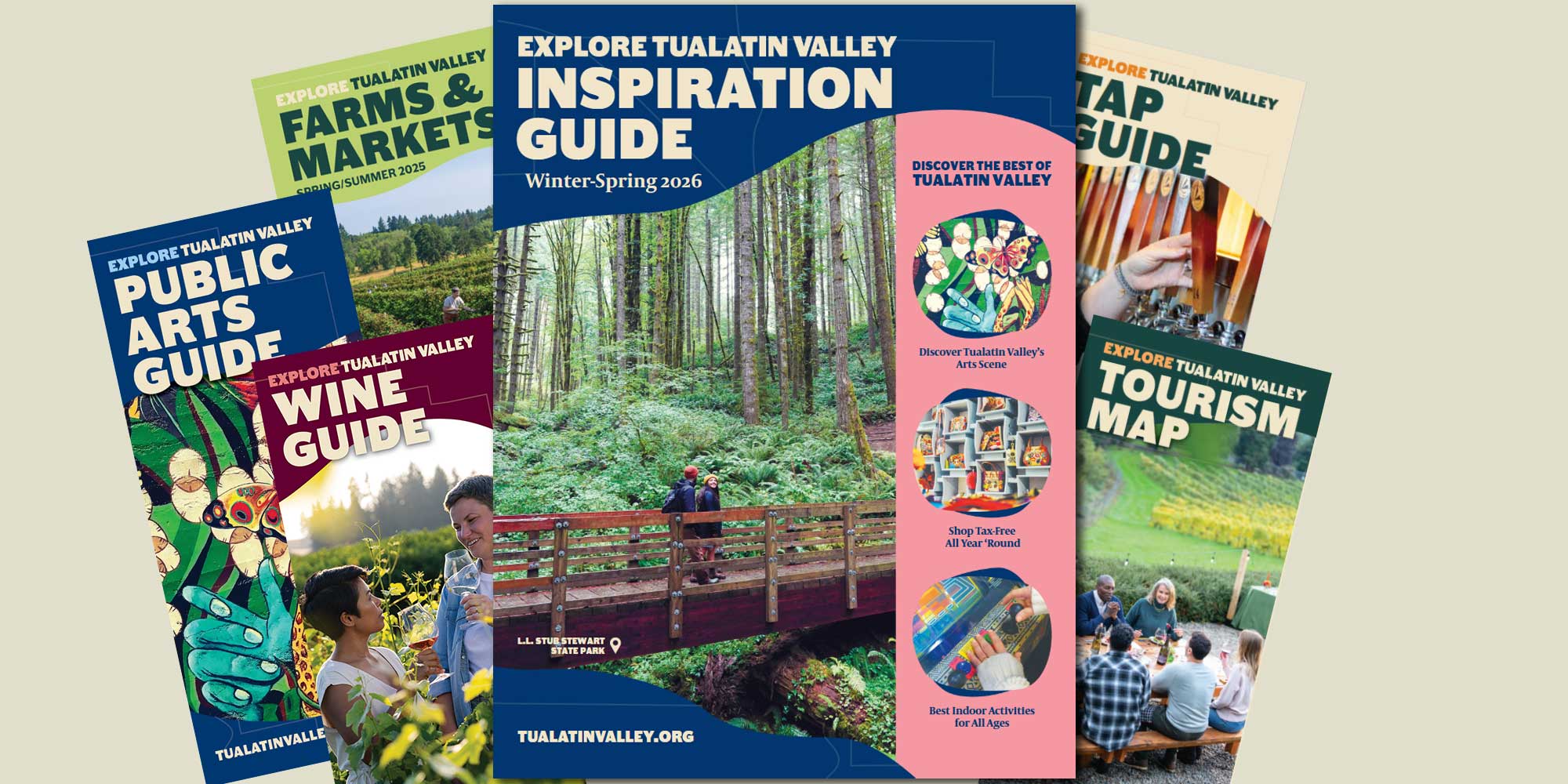Discover Ice Age Relics & Oregon Trail Lore
We want to acknowledge the people on whose land we live—the Atfalati-Kalapuyans also known as the Tualatin Band of Kalapuyans—the first inhabitants of Washington County. We are grateful for the land we are on, Kalapuyan land.
Signers of the Willamette Valley Treaty of 1855 were removed from their homelands to the Grand Ronde Indian Reservation. Today their descendants are tribal members of Grand Ronde and Siletz tribes, carrying on the traditions and cultures of their ancestors.
Remnants of the Ice Age
More than 15,000 years ago, the Missoula floods swept through what are now the Willamette (“Will-AM-mit”) and Tualatin (“Too-WALL-uh-tin”) Valleys. Immense rocks (also known as glacial erratics), as well as bones from now-extinct prehistoric creatures, have been discovered throughout the region for more than a century.
The Rice Northwest Museum of Rocks and Minerals which houses the largest collection of gems and rocks in the Pacific Northwest, also provides a glimpse into the area’s geological history with its assortment of fossils and petrified woods.
Native American Heritage
Prior to the arrival of Euro-American colonists, the Atfalati tribe of the Kalapuya Native Americans inhabited the Tualatin Valley. The Atfalati (also known as the Tualatin) was a collection of 16 independent, yet related, villages of the Kalapuyan people, who were native to the Willamette Valley.
These villages encompassed the Tualatin Plains (now Beaverton, Hillsboro and Forest Grove), the Wapato Valley (now Gaston) and the Chehalem and North Yamhill valleys. Many of the villages were centered around Wapato Lake, which was a marshy lake in Gaston known for its abundance of wapato, a staple in the native diets. While rich soils and abundant deer and elk sustained the tribes, the Tualatin peoples were greatly affected by disease.
In 1855, only 65 Tualatin remained. It also was at this time that the U.S. government concluded a treaty with all tribes in the Willamette Valley, and the Tualatin people were moved to the Grand Ronde Reservation, approximately 60 miles south of their original lands. Today, the Atfalati have all but disappeared, and the tribe’s influence on the area’s history is told through permanent artifacts that are on display at the Tualatin Heritage Center and the “This IS Kalapuyan Land” exhbit from Five Oaks Museum.
Oregon Trail History
In the 1800s, explorers headed west along the Oregon Trail. In the years after the Lewis and Clark expedition, word traveled east about this region’s exceptional characteristics and ideal agricultural soils. By the 1830s and 1840s, a colorful mix of explorers was seeking earnings and adventure in the Tualatin Valley.
Joseph “Joe” Meek (1810– 1875), a fur trapper and cousin of Sarah Childress Polk, wife of James Polk, the 11th president of the United States. Meek was instrumental in the creation of the Oregon Territory, of which he was Marshal from 1848 to 1853. Meek and his wife, Virginia, are buried at the cemetery on the grounds of Hillsboro’s Old Scotch Church, also known as the Tualatin Plains Presbyterian Church.
Tabitha Moffat Brown (1780–1858), called “The Mother of Oregon,” was an educator from Massachusetts and, at the age of 66, set out for Oregon with two of her children and her brother-in-law, Captain John Brown. In 1848, Moffat Brown, along with Reverend Harvey Clark, a Congregationalist minister, founded the Oregon Orphans’ Asylum and School at Tualatin Plains, to care for and educate orphans of the Oregon Trail. A year later—and 10 years before Oregon earned statehood—it was chartered as the Tualatin Academy, the first formal act of the territorial government. In 1854, the school added higher education and today is known as Pacific University.
The lives and stories of these and other Oregonians who made an indelible mark on Washington County and the Tualatin Valley, are recounted at these historical organizations:

